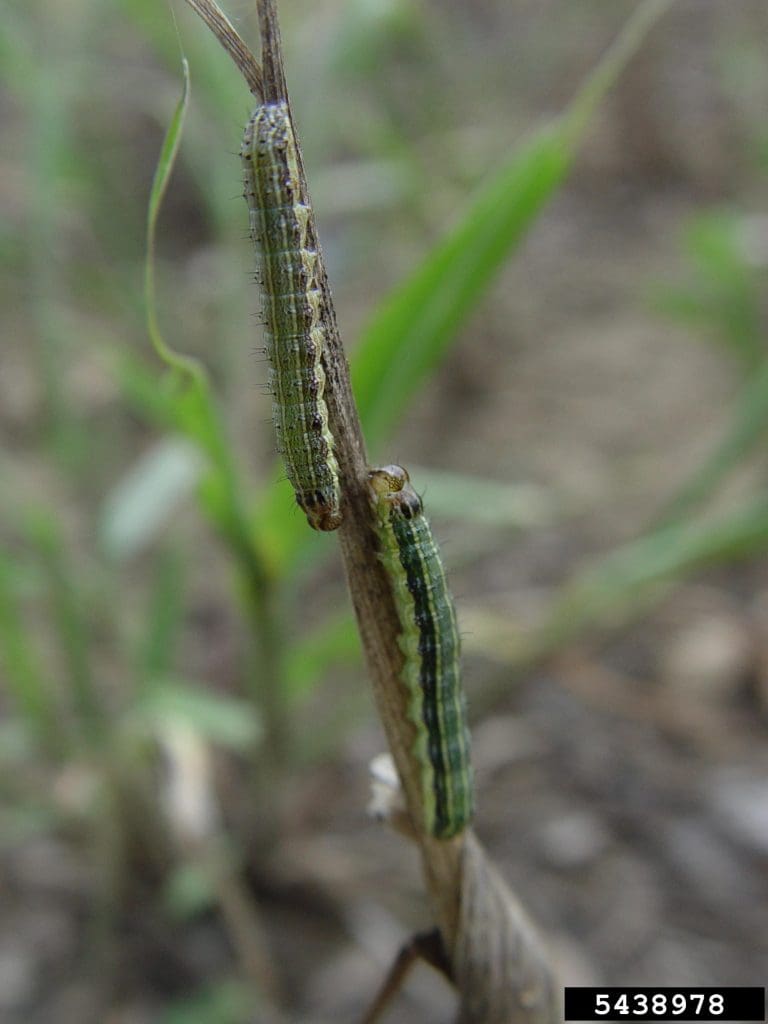THE national Consultative Committee on Emergency Plant Pests has conceded it will be impossible to eradicate the latest exotic pest to arrive in Australia, fall armyworm, following its detection at a number of sites in far north Queensland.

Fall armyworm. (Photo: Chazz Hesselein, Alabama Cooperative Extension System, Bugwood.org)
Fall armyworm, which originated from the Americas and has rapidly spread throughout Africa, the Indian subcontinent, China and Southeast Asia, was first detected on Australian soil on two Torres Strait Islands, Erub and Saibai, in late January this year.
It has since been found at Bamaga on the tip of Cape York in mid-February and more recently on a maize crop near Georgetown, 300 kilometres west of Cairns in far north Queensland and at South Johnstone, Tolga and Lakeland.
Its larvae have the potential to destroy more than 350 plant species, including maize, cotton, rice, sorghum, sugarcane, wheat and many vegetable and fruit crops.
Industry taskforce
An industry roundtable met late last week in Brisbane to assess the situation and determine the next steps to be taken, which include identifying suitable control products, determining what industry needs are, monitoring the spread of the pest, and market access.
Surveillance is being undertaken, including trapping, in major agricultural areas across Queensland, Northern Territory and Western Australia to determine the extent of the current outbreak and also to monitor its spread.
On Monday 9 March, Biosecurity Queensland will meet with research and development experts to explore short, medium and long-term management solutions to minimise the potential impacts of fall armyworm.
The Queensland Department of Agriculture and Fisheries has established a taskforce to ensure communication with industry.
In the medium to long-term, the taskforce will identify the crops most favoured by the pest, assist affected industries gain access to appropriate chemical controls, help industry manage any pesticide resistance, and research possible biological controls.
Capacity to spread rapidly
Grains Research and Development Corporation managing director Dr Steve Jefferies said grain growers – especially those throughout central and coastal Queensland – should keep an eye on their crops for signs of fall armyworm incursions.
He said fall armyworm adult moths were highly mobile and capable of travelling large distances quickly.
“Their migration rate is remarkably fast, estimated at almost 500 kilometres per generation. They can also spread through people movement – it is believed that their arrival in Africa was via a passenger flight,” he said.
“GRDC has invested in research aimed at characterising fall armyworm insecticide resistance and determining the most appropriate prevention and preparedness measures.
“The main control measure available to Australian growers is application of insecticides. Experience in overseas countries is that fall armyworm has developed resistance to insecticides. So, it’s essential that this research is in place to rapidly inform grain growers about what chemicals are most effective to mitigate the impact of fall armyworm in Australia.”
Cross industry response
Dr Jefferies said GRDC and other plant based RDCs were working together to coordinate a cross industry response and, through the Plant Biosecurity Research Initiative (PBRI), were coordinating permit submissions to the APVMA to streamline APVMA insecticide permit assessments and decrease turn-around timelines.
He said GRDC had been proactive in regard to preparedness for fall armyworm, investing with PHA to secure minor use chemical permits.
“We secured the first permit as early as April 2018, with a second permit issued earlier this month, which shows how we’ve tried to be on the front foot and as prepared as possible for this potential incursion,” Dr Jefferies said.
“The best shot we’ve now got to minimise the spread and contain the impact of fall armyworm is for early detection and effective control measures. It’s important that growers monitor crops and use treatments according to the permit.”
Identifying fall armyworm
Producers are urged to monitor crops for signs of unusual levels of caterpillar damage leading to defoliation of the crop and report suspected sightings to assist with early detection, and potential treatment.
Larvae are light coloured with a larger darker head. As they develop, they become browner with white lengthwise stripes and also develop dark spots with spines.
Adult moths are 32 to 40 millimetre in length wing tip to wing tip, with a brown or grey forewing and a white hind wing.
Male fall armyworm adults have more patterns and a distinct white spot on each of their forewings.
Sources: Biosecurity Queensland, QDAF, GRDC
Growers should have on-farm biosecurity measures to protect their crops from pests and diseases. More information is available at farmbiosecurity.com.au
Industry and the general public are strongly encouraged to report suspect detections of fall armyworm moths and larvae to the Department of Agriculture and Fisheries on 13 25 23.
For more information, including pictures and how to identify fall armyworm, visit daf.qld.gov.au or https://www.business.qld.gov.au/industries/farms-fishing-forestry/agriculture/crop-growing/priority-pest-disease/fall-armyworm
Grain Central: Get our free daily cropping news straight to your inbox – Click here

HAVE YOUR SAY